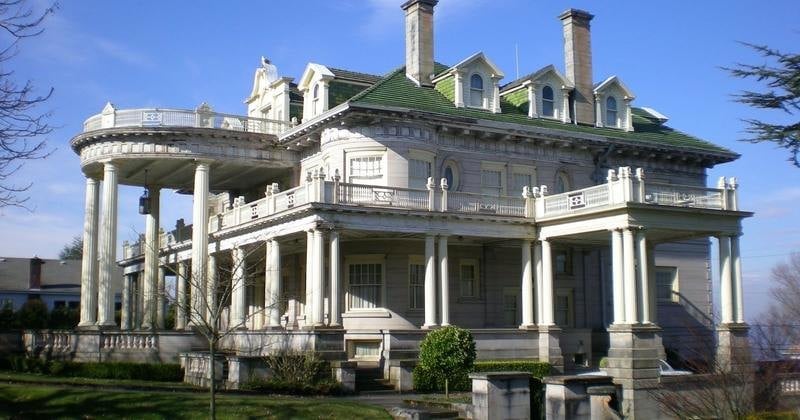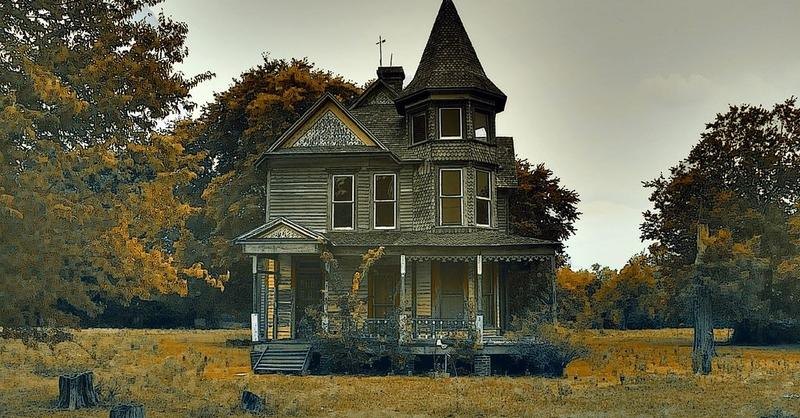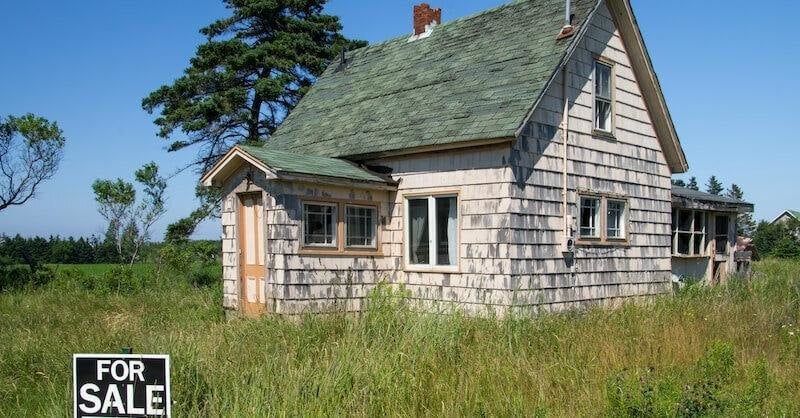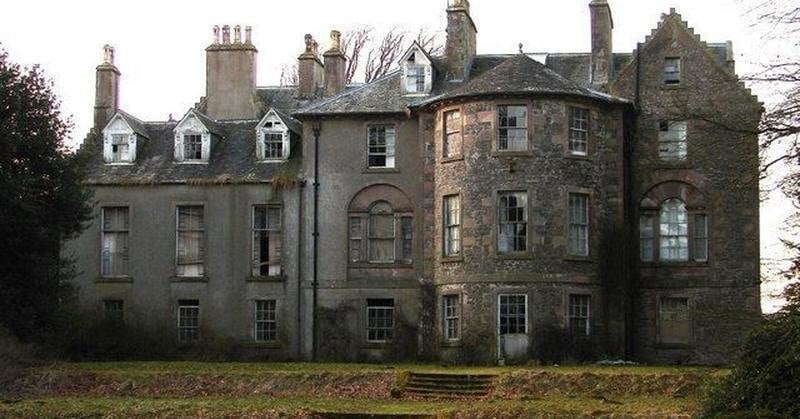Buying abandoned houses specifically for seniors involves additional considerations to ensure safety, accessibility, and comfort. Here's a step-by-step guide to help you find and purchase such properties:
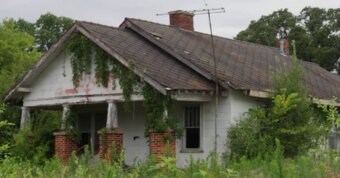
Advantages of Acquiring Abandoned Properties
Lower Purchase Price
-
Cost Savings: Abandoned properties are often sold at a fraction of the cost of comparable, well-maintained homes.
-
Negotiation Power: Sellers are usually more willing to negotiate prices and terms due to the property's distressed condition.
Investment Potential
-
Appreciation: With proper renovation, abandoned properties can significantly appreciate in value.
-
Rental Income: Renovated properties can be rented out, generating a steady income stream.
Tax Incentives
-
Property Tax Reductions: Some local governments offer reduced property taxes for buyers who invest in rehabilitating abandoned properties.
-
Tax Credits: Potential eligibility for tax credits, particularly if the property is in a designated revitalization area or is historically significant.
Customization Opportunities
-
Personalization: Buyers can renovate and customize the property to their exact specifications and needs.
-
Modernization: Opportunity to update the property with modern amenities and energy-efficient systems.
Community Improvement
-
Revitalization: Restoring abandoned properties can contribute to the revitalization of a neighborhood, increasing overall property values.
-
Crime Reduction: Occupied and maintained properties help reduce crime rates and improve community safety.
Environmental Benefits
-
Sustainable Development: Renovating existing structures can be more environmentally friendly than new construction, reducing waste and the need for new building materials.
-
Urban Infill: Utilizing existing properties supports urban infill development, reducing urban sprawl.
Government and Non-Profit Programs
-
Grants and Loans: Availability of special grants and low-interest loans for purchasing and renovating abandoned properties.
-
Non-Profit Assistance: Some non-profit organizations provide assistance with financing and renovating abandoned homes.
2024 Estimated Prices of Abandoned Houses in 10 States
Here are the estimated prices for abandoned houses in 10 states for 2024, considering current market trends and data:
1. New York
-
Estimated Price: $150,000 - $300,000
-
Description: In both urban and suburban areas, abandoned properties can vary greatly in price due to high demand and the potential for significant renovation costs.
2. California
-
Estimated Price: $250,000 - $500,000
-
Description: Abandoned houses in California, especially in cities like Los Angeles and San Francisco, are expensive due to high property values and potential for development.
3. Texas
-
Estimated Price: $100,000 - $250,000
-
Description: Texas offers more affordable options, particularly in less populated areas, but urban centers like Austin and Dallas are pricier.
4. Florida
-
Estimated Price: $80,000 - $200,000
-
Description: In Florida, coastal properties might be higher due to location, but inland properties are more affordable.
5. Michigan
-
Estimated Price: $50,000 - $120,000
-
Description: Michigan has a variety of affordable abandoned homes, especially in Detroit and other cities experiencing population decline.
6. Ohio
-
Estimated Price: $40,000 - $100,000
-
Description: Abandoned homes in Ohio, particularly in cities like Cleveland and Cincinnati, are generally more affordable.
7. Pennsylvania
-
Estimated Price: $60,000 - $150,000
-
Description: In Pennsylvania, prices vary with urban properties in Philadelphia and Pittsburgh being higher.
8. Alabama
-
Estimated Price: $30,000 - $90,000
-
Description: Alabama offers some of the most affordable abandoned properties, particularly in rural areas and smaller towns.
9. Illinois
-
Estimated Price: $50,000 - $150,000
-
Description: Prices in Illinois can be higher in Chicago and its suburbs but more affordable in other parts of the state.
10. Georgia
-
Estimated Price: $70,000 - $180,000
-
Description: In Georgia, Atlanta properties can be higher, but rural and suburban areas offer more affordable options.
Influencing Factors on Property Prices
1. Location
-
Neighborhood Quality: Proximity to good schools, low crime rates, and amenities like parks and shopping centers can significantly increase property values.
-
Urban vs. Rural: Properties in urban areas generally command higher prices due to demand for proximity to jobs and amenities.
2. Economic Conditions
-
Employment Rates: Higher employment rates can boost property values as more people can afford to buy homes.
-
Economic Growth: Regions with strong economic growth often see rising property prices due to increased demand.
3. Interest Rates
-
Mortgage Rates: Lower interest rates make borrowing cheaper, which can increase demand for housing and drive up prices.
-
Federal Reserve Policies: Changes in federal interest rates directly affect mortgage rates and, consequently, housing demand and prices.
4. Supply and Demand
-
Housing Supply: Limited supply with high demand tends to increase property prices. Conversely, a surplus of homes can lead to lower prices.
-
Population Growth: Areas with growing populations typically experience increased demand for housing, driving up prices.
5. Property Condition and Features
-
Maintenance and Upgrades: Well-maintained properties with modern amenities typically fetch higher prices.
-
Size and Layout: Larger homes with more bedrooms and bathrooms are usually more valuable.
Considerations for Buying Abandoned Houses
1. Property Condition:
-
Evaluate the structural integrity, including the foundation and roof, and check for interior and exterior damage such as mold, water damage, and pest infestations. Inspect plumbing, electrical systems, and HVAC for functionality. Obtain detailed renovation cost estimates and consider the need for permits.
2. Legal Aspects:
-
Conduct a thorough title search to ensure there are no liens, outstanding taxes, or ownership disputes. Verify compliance with zoning laws and building codes, especially if the property is in a historic district. Ensure all legal requirements are met for a clear transfer of ownership.
3. Neighborhood Dynamic:
-
Research crime rates and safety statistics, and consider community engagement levels. Assess local economic conditions, including employment rates and development trends. Evaluate the proximity to amenities like schools, hospitals, and public transportation, and consider future development plans that could impact property values.
Steps for Seniors to Find and Purchase Abandoned Properties
Locating Abandoned Properties:
-
Use real estate websites, check local government auctions, and consult with specialized real estate agents.
Performing Due Diligence:
-
Hire a professional inspector to check structural, plumbing, and electrical systems. Research property history for liens or unpaid taxes.
Navigating Zoning Laws and Assessing Market Values:
-
Ensure compliance with local zoning laws and building codes. Compare similar properties to determine market value.
Seeking Financial Assistance and Resources:
-
Look into government grants, low-interest loans, and senior-specific programs. Seek help from organizations like HUD and local housing authorities.
Preparing for Renovation and Investment:
-
Get detailed renovation estimates and plan a budget and timeline for the necessary work.
The article provides a guide for buying abandoned houses for seniors, highlighting benefits such as lower purchase prices, investment potential, tax incentives, and customization opportunities. It emphasizes community improvement and environmental benefits. The article lists estimated prices for abandoned houses in ten states for 2024 and explains factors affecting prices, like location, economic conditions, and supply and demand. It also offers a step-by-step guide for seniors, covering how to locate properties, perform due diligence, navigate zoning laws, seek financial assistance, and prepare for renovation.

